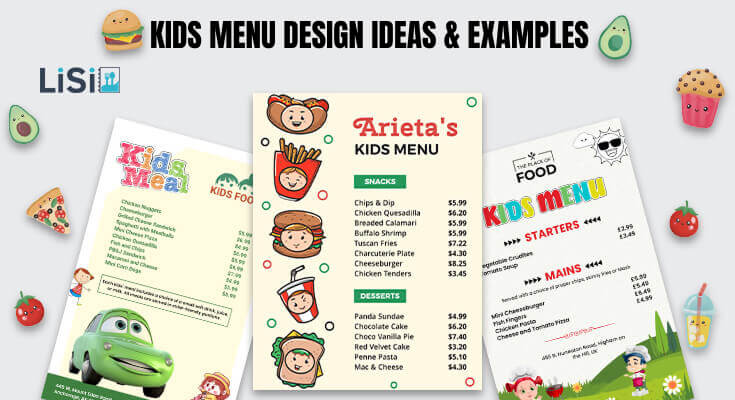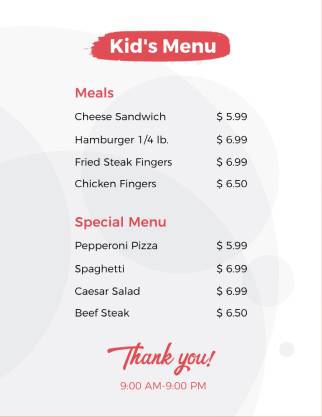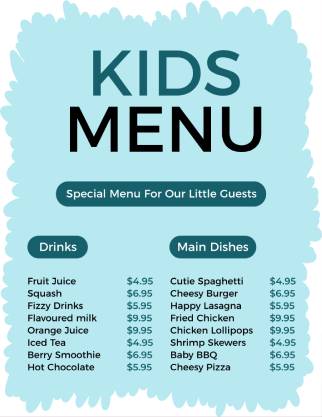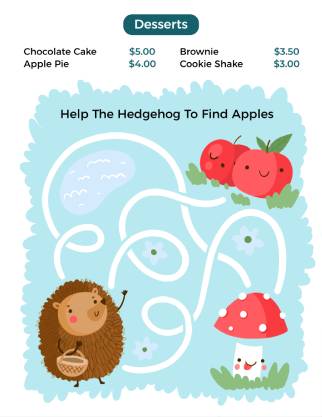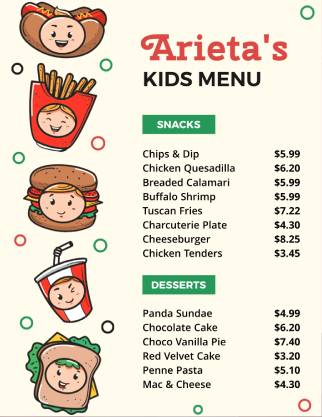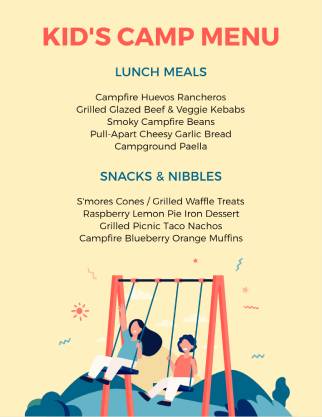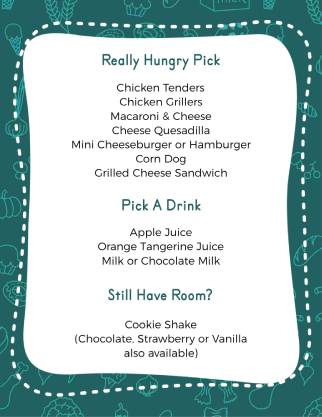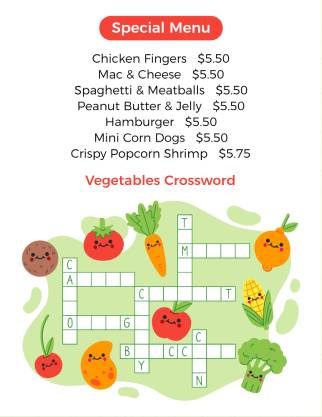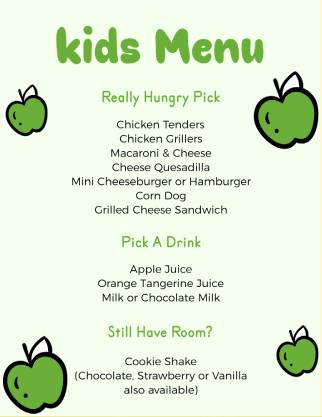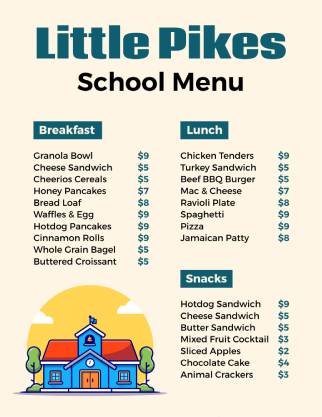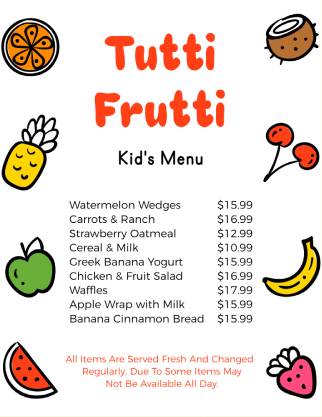When you walk into a restaurant with children, what’s the first thing they notice? Most often, it’s the kids menu design that captures their attention and sets the tone for the entire dining experience. However, creating effective kids menu design ideas goes far beyond simply adding colorful pictures and cartoon characters.
In today’s competitive restaurant industry, smart menu design can significantly impact your bottom line. Moreover, well-designed children’s menus not only engage young diners but also influence parents’ dining decisions. Therefore, understanding the psychology behind effective kids menu design becomes crucial for restaurant success.
What Makes Kids Menu Design Truly Stand Out?
Kids menu design serves multiple purposes beyond just listing food options. First and foremost, it acts as a powerful marketing tool that can increase customer satisfaction and boost sales. Additionally, creative menu designs help reduce wait times by keeping children entertained while parents make their selections.
Research shows that restaurants with engaging kids menus experience 40% higher family dining frequency. Furthermore, children often influence 80% of family restaurant choices, making your kids menu a critical business asset. Consequently, investing in professional menu design can yield substantial returns through increased customer loyalty and higher average spending per visit.
The Psychology Behind Effective Children’s Menu Design
Understanding child psychology plays a vital role in creating successful menu designs. Children process visual information differently from adults, responding more positively to bright colors, familiar characters, and interactive elements. Meanwhile, their attention spans require designs that communicate quickly and effectively.
Color psychology particularly influences children’s food choices. For instance, red and yellow stimulate appetite and create excitement, while blue tends to suppress hunger. Therefore, strategic color selection becomes essential for encouraging food purchases and creating positive dining experiences. Moreover, we’ve also covered a guide on menu engineering that will help you understand complete menu design psychology.
What are the Best Kids Menu Design Examples and Ideas?
Here are some fun kids menu design examples that captivate young guests and add a playful touch. Also, you can use customizable menu templates perfect for any restaurant theme or occasion.
You may find these examples as an inspiration to design a menu for kids, and if you are a restaurant and struggling to create a dessert menu, head on to LiSi menu maker, which is an easy-to-use platform that allows you to design a menu without skills.
What Are the Core Elements Every Kid’s Menu Should Include?
There are many core elements required for restaurant menu designs, but successful kids menu design incorporates several essential elements that work together to create an engaging experience. Let’s explore each component in detail to understand how they contribute to overall effectiveness.
1. Visual Appeal and Color Psychology
Colors significantly impact children’s emotional responses and food preferences. Bright, vibrant colors like orange, yellow, and red naturally draw children’s attention and stimulate their appetite. However, balance remains crucial – too many competing colors can overwhelm young minds and create visual chaos.
Consider these effective color combinations:
- Primary colors (red, blue, yellow) for maximum impact
- Complementary colors that create visual harmony
- Pastel versions of bright colors for softer appeal
- Consistent color schemes that reinforce brand identity
Additionally, contrast helps children read menu items more easily. Therefore, ensure sufficient contrast between text and background colors for optimal readability.
2. Age-Appropriate Typography and Font Selection
Typography choices directly affect how easily children can read and understand menu content. Sans-serif fonts generally work better for young readers because they appear cleaner and more straightforward. Moreover, larger font sizes accommodate developing reading skills and visual processing abilities.
Recommended typography guidelines include:
- Font sizes between 14-18 points for main text
- Bold headings that stand out clearly
- Simple, rounded fonts that feel friendly
- Avoiding overly decorative or script fonts
- Consistent spacing between letters and words
Furthermore, incorporating playful typography and color combinations for menu design can enhance engagement without sacrificing readability.
3. Interactive Elements That Engage Young Diners
Interactive features transform passive menu reading into active engagement opportunities. These elements keep children occupied while parents review their options and place orders. Additionally, interactive components create positive associations with your restaurant brand.
Popular interactive menu elements include:
- Coloring sections with crayons provided
- Simple puzzles and mazes
- Word searches featuring food items
- Connect-the-dots activities
- Sticker collections or punch cards
- QR codes linking to kid-friendly games
Meanwhile, ensure activities remain age-appropriate and don’t distract from the primary purpose of food selection.
How Can You Create Visually Stunning Kids Menu Layouts?
Layout design determines how effectively your menu communicates with young customers. Strategic organization helps children navigate options easily while maintaining visual interest throughout the design.
1. Grid-Based vs. Free-Form Design Approaches
Grid-based layouts provide structure and organization that help children process information systematically. These designs work particularly well for restaurants with extensive kids options or complex pricing structures. Conversely, free-form layouts offer more creative flexibility and can accommodate unique branding elements.
Grid-based advantages:
- Clear organization of menu categories
- Consistent spacing and alignment
- Easy navigation for young readers
- Professional appearance that parents appreciate
- Scalable design for different menu sizes
Free-form benefits:
- Creative freedom for unique designs
- Better accommodation of illustrations
- More engaging visual storytelling
- Flexibility for seasonal menu changes
- Opportunity for brand differentiation
2. Strategic Use of White Space and Visual Hierarchy
White space, or negative space, prevents visual overload and helps children focus on important information. Proper spacing between menu items allows young minds to process each option individually. Moreover, strategic white space creates breathing room that makes menus feel less overwhelming.
Visual hierarchy guides children’s attention through your menu systematically. Large headings draw initial attention, while smaller text provides detailed information. Therefore, follow the best practices for organizing a menu that help customers understand menu organization and find desired items quickly.
3. Create Easy-to-Read Sections
Even though a kids menu should be colorful and playful, it must also be clear and easy to navigate for both children and parents. Dividing the menu into well-defined sections helps kids quickly find what they like and makes ordering faster. Use simple category names like Starters, Mains, Drinks, and Desserts, and pair them with fun icons or illustrations for easy recognition. Keep descriptions short and use plain language so even young readers can understand. Highlighting popular items in a “Kid’s Choice” or “Chef’s Favorite” box can also make decision-making easier.
Tips for creating easy-to-read sections:
- Use bright section headers with larger fonts.
- Add icons or small images (pizza slice, ice cream cone) for each category.
- Write short menu descriptions
- Use boxes or colored backgrounds to highlight special items.
4. Keep the Layout Balanced and Uncluttered
A kids’ menu should be colorful and engaging, but too many elements crammed together can make it overwhelming and hard to read. A balanced layout uses enough white space (empty areas) to let the text, images, and design elements breathe, making the menu more inviting.
This also helps children and parents quickly spot the items they’re interested in without feeling distracted. Avoid using too many fonts, colors, or overly busy backgrounds that compete with the menu content. The goal is to make the design fun and easy to follow at the same time.
Tips for keeping the layout balanced and uncluttered:
- Use white space to separate sections and avoid crowding.
- Limit the number of menu items per page for clarity.
- Stick to two or three main colors for a clean look.
- Space out images and illustrations so they don’t overlap.
What Creative Themes Work Best for Children’s Menus?
Thematic approaches provide cohesive design frameworks that enhance brand storytelling and create memorable experiences. However, themes must align with your restaurant’s overall brand identity while appealing to your target demographic.
1. Adventure and Exploration Themes
Adventure themes tap into children’s natural curiosity and desire for discovery. These designs often incorporate maps, treasure hunts, and exploration elements that transform dining into an exciting journey. Furthermore, adventure themes work particularly well for family restaurants with outdoor or casual dining atmospheres.
Adventure theme elements include:
- Treasure map layouts with food “destinations”
- Safari or jungle exploration concepts
- Space adventure with planetary food options
- Pirate themes with buried treasure activities
- Mountain climbing or hiking adventures
- Ocean exploration with sea creature mascots
Additionally, adventure themes provide natural frameworks for interactive elements and educational content.
2. Character-Based Design Concepts
Original mascot characters create unique brand identities while avoiding licensing fees associated with popular media characters. Custom characters can embody your restaurant’s personality and values while appealing to children across different age groups. Moreover, consistent character usage builds brand recognition and customer loyalty.
When developing mascot characters, consider:
- Age-appropriate design aesthetics
- Diverse representation that welcomes all children
- Personalities that reflect your brand values
- Versatile designs that work across marketing materials
- Scalable graphics for various applications
- Memorable features that children can easily recognize
3. Educational and Learning-Focused Themes
Educational themes combine entertainment with learning opportunities, appealing to parents who value enriching experiences. These designs can incorporate nutrition education, geography lessons, or cultural exploration while maintaining fun and engagement. Furthermore, educational themes demonstrate your restaurant’s commitment to child development.
Educational theme possibilities:
- Around-the-world cuisine exploration
- Nutrition facts presented as fun games
- Historical food origins and cultural stories
- Science experiments related to cooking
- Geography lessons through regional dishes
- Language learning with international menu items
4. Interactive and Activity-Based Menus
Interactive and activity-based menus turn mealtime into a fun experience for children, not just a waiting period before food arrives. Instead of simply reading through a list of dishes, kids can engage with the menu by coloring, solving puzzles, connecting dots, or even designing their meal.
This not only keeps them entertained but also reduces restlessness, making dining more enjoyable for both kids and parents. Restaurants can also use these activities to subtly introduce healthier food options playfully, encouraging children to make better choices without feeling pressured.
Ideas for interactive children’s menus:
- Coloring pages with food-themed characters or scenes from the restaurant’s theme.
- Maze or puzzle games where the solution leads to a “special meal” section.
- Connect-the-dots drawings revealing a fun image related to the dish.
- Build-your-own meal sections, such as pizza toppings or sandwich fillings.
- Spot-the-difference games featuring food illustrations.
5. Storybook and Movie Tie-Ins
Storybook and movie tie-in themes make a children’s menu instantly appealing by connecting it to characters and stories kids already love. When a menu feels like part of their favorite book or film, it creates excitement and a sense of familiarity, making them more eager to order and try new dishes. Restaurants can design menus that follow a storyline, feature well-known heroes or magical worlds, and even give each dish a creative, themed name.
These menus can also become keepsakes that children want to take home, increasing brand loyalty and encouraging repeat visits.
Ideas for storybook and movie-themed menus:
- Alice in Wonderland Tea Party – whimsical dishes like “Mad Hatter Sandwich” or “Queen of Hearts Cupcake.”
- Peter Pan’s Neverland Feast – sections named “Lost Boys Snacks” and “Captain Hook’s Catch.”
- The Jungle Book Adventure – tropical fruits, jungle animal-shaped pancakes, and “Baloo’s Honey Treats.”
- Frozen Winter Menu – snowflake-shaped cookies, “Olaf’s Carrot Sticks,” and icy blue drinks.
6. Animal and Nature Themes
Animal and nature-themed children’s menus are a classic choice because they feel friendly, colorful, and comforting. Kids naturally connect with animals, whether it’s cute farm pets, wild safari creatures, or underwater sea life. A nature-inspired design can also subtly promote healthy eating by linking fresh, wholesome food to the beauty of the outdoors.
These menus can feature animal mascots introducing different food sections, fun facts about wildlife, or playful illustrations that turn the dining experience into an adventure. By combining vibrant colors, imaginative food names, and a touch of education, animal and nature themes make mealtime more exciting and memorable for children.
Ideas for animal and nature-themed menus:
- Farmyard Friends – dishes introduced by cows, chickens, and sheep.
- Under the Sea – seafood and healthy snacks guided by dolphins, turtles, and starfish.
- Jungle Safari – tropical fruits, grilled dishes, and “Lion’s Pizza” or “Monkey’s Banana Shake.”
- Garden Fresh – salads, veggie wraps, and smoothies with a butterfly or ladybug mascot.
- Arctic Adventure – icy treats, fish-based dishes, and “Penguin Pancakes.”
What Are the Most Effective Kids Menu Content Strategies?
Content strategy encompasses both visual and textual elements that communicate your offerings effectively to young audiences. Strategic content development can influence food choices, reduce ordering confusion, and enhance overall dining experiences.
Menu Item Names That Appeal to Children
Creative naming strategies make ordinary foods sound exciting and appealing to young diners. Playful names can transform simple dishes into adventures while maintaining accuracy about ingredients and preparation methods. However, names should remain clear enough for parents to understand nutritional content.
Effective naming techniques include:
- Action words that suggest fun and excitement
- Alliteration that makes names memorable
- Size descriptors that help children visualize portions
- Character names that connect to your theme
- Descriptive adjectives that highlight appealing qualities
- Simple language that children can pronounce easily
For example, “Super Hero Strength Spaghetti” sounds more exciting than “Spaghetti with Marinara Sauce,” while clearly indicating the dish contents.
Nutritional Information Presentation
Parents increasingly seek nutritional transparency when making dining decisions for their children. However, presenting this information in child-friendly formats requires creative approaches that don’t overwhelm young readers. Additionally, positive framing can encourage healthier food choices.
Strategies for presenting nutrition information:
- Visual representations using familiar symbols
- Color-coding systems for different nutritional categories
- Fun facts about ingredients and their benefits
- Interactive elements that teach about healthy eating
- Positive language that emphasizes benefits rather than restrictions
- Clear allergen warnings that parents can easily identify
Moreover, consider offering lighter versions of popular items for health-conscious families.
Portion Size Communication
Children often struggle to understand portion sizes from text descriptions alone. Visual cues help young diners select appropriate amounts while preventing food waste and over-ordering. Furthermore, clear portion communication helps parents budget for family meals.
Effective portion communication methods:
- Photo representations of actual serving sizes
- Comparison to familiar objects or hands
- Sharing suggestions for larger portions
- Clear indicators for individual vs. family-style items
- Pricing that reflects actual portion sizes
- Options for half-portions or kid-sized servings
Which Visual Elements in Kids Menu Designs Create the Biggest Impact?
Visual elements form the foundation of effective kids menu design, directly influencing engagement levels and food selection patterns. Strategic visual choices can guide attention, create emotional connections, and enhance overall dining experiences.
1. Photography vs. Illustration Approaches
Both photography and illustration offer unique advantages for kids’ menu design. Photography provides realistic representations that help children understand exactly what they’ll receive. Meanwhile, illustrations offer creative flexibility and can incorporate thematic elements more seamlessly.
Photography advantages:
- Accurate representation of food appearance
- Professional presentation that appeals to parents
- Cost-effective for restaurants with existing food photography
- Easy updates when recipes or presentations change
- Realistic expectations that reduce disappointment
- Appetizing visuals that stimulate hunger
Illustration benefits:
- Creative freedom for stylized presentations
- Consistent aesthetic with thematic designs
- Ability to exaggerate appealing food characteristics
- Integration with mascot characters and brand elements
- Timeless quality that doesn’t require frequent updates
- Flexibility for seasonal or promotional variations
2. Icon Systems and Symbol Usage
Icons and symbols provide universal communication that transcends reading ability levels. Well-designed icon systems help children navigate menus independently while providing quick reference points for parents. Additionally, consistent iconography reinforces brand identity and improves recognition.
Effective icon categories include:
- Dietary restriction indicators (vegetarian, gluten-free, dairy-free)
- Spice level indicators using familiar symbols
- Allergen warnings with clear, recognizable graphics
- Nutritional highlights (protein, vegetables, whole grains)
- Preparation method indicators (grilled, baked, fried)
- Portion size references using visual comparisons
Furthermore, ensure icons remain consistent in style and meaning throughout all marketing materials.
3. Playful Typography
Playful typography can make a children’s menu feel fun, friendly, and inviting. Kids respond well to large, bold, and colorful fonts that are easy to read. Using different font styles for headings, food names, and descriptions helps create excitement while guiding the reader’s eyes through the menu. The key is to balance creativity with clarity – fonts should be lively but still legible, especially for younger readers who may be learning to read.
Mixing text sizes, using bright colors, and adding creative shapes around words can make menu sections stand out and feel more like part of a game or story.
Tips for using playful typography in kids menus:
- Use bold, colorful fonts for section titles and dish names.
- Keep descriptions in simple, easy-to-read fonts for clarity.
- Mix font sizes to highlight special items or offers.
- Add speech bubbles or word art for fun emphasis.
- Avoid overly fancy or cursive fonts that are hard for children to read.
4. Bright and Cheerful Colors
Children are naturally drawn to bold, vibrant colors. A colorful menu instantly catches their eye and sets a happy tone for the meal.
- Creates excitement and a playful atmosphere.
- Helps children quickly notice different sections or items.
- Makes the menu feel more like a game or story rather than a list of food.
Use tips:
- Use warm and bright shades like yellow, orange, red, and sky blue.
- Assign different colors to food categories (e.g., green for healthy snacks, blue for drinks).
- Avoid too many clashing colors – keep a balanced, cheerful palette.
5. Seasonal and Event-Based Visuals
Seasonal and event-based visuals keep children’s menus fresh, exciting, and relevant throughout the year. By updating the design to match holidays, festivals, or seasonal themes, restaurants can create anticipation for special occasions and encourage repeat visits.
Kids love the novelty of seeing new colors, characters, and decorations on the menu, and parents appreciate the effort to make dining out feel festive. These visuals can also be paired with limited-time food items, themed activities, and promotions to enhance the overall dining experience.
Ideas for seasonal and event-based kids menu visuals:
- Halloween – friendly ghosts, pumpkins, bats, and “spooky” food names.
- Christmas/Winter – snowflakes, reindeer, candy canes, and gingerbread houses.
- Easter – pastel colors, bunnies, eggs, and spring flowers.
- Summer – beaches, sunshine, ice creams, and tropical fruits.
- School holidays – backpacks, books, and fun learning-themed graphics.
What Common Mistakes Should You Avoid in Kids Menu Design?
Understanding common design pitfalls helps create more effective menus while avoiding costly mistakes that can negatively impact customer experiences. Learning from others’ errors saves time, money, and potential customer dissatisfaction.
1. Overstimulation and Visual Clutter
Excessive visual elements can overwhelm children’s developing sensory processing abilities, leading to decision paralysis or behavioral difficulties. While creativity is important, restraint and strategic design choices create more effective results. Moreover, cluttered designs appear unprofessional to parents making dining decisions.
Signs of overstimulation include:
- Too many competing colors or patterns
- Overcrowded layouts with insufficient white space
- Multiple fonts or inconsistent typography choices
- Conflicting design themes or visual styles
- Information overload with excessive text or options
- Distracting animations or moving elements in digital versions
Additionally, consider how design choices affect children with sensory processing sensitivities or attention difficulties.
2. Age Appropriateness Mismatches
Designing for the wrong age group alienates target customers and reduces menu effectiveness. Children’s cognitive abilities, reading skills, and interests vary significantly across different developmental stages. Therefore, understanding your target demographic becomes crucial for design success.
Age-appropriate considerations:
- Reading level requirements for menu text
- Complexity of interactive activities and games
- Visual appeal of design themes and characters
- Attention span requirements for various elements
- Motor skills needed for interactive components
- Interest levels in different topics or activities
Furthermore, consider offering different menu versions for various age groups and customer types.
3. Neglecting Practical Considerations
Beautiful designs that ignore practical restaurant operations create ongoing problems for staff and customers. Successful menus must function effectively in real-world dining environments while maintaining visual appeal. Additionally, practical considerations affect long-term costs and operational efficiency.
Important practical factors include:
- Printing costs and frequency of updates needed
- Staff training requirements for explaining menu features
- Storage and distribution logistics for physical menus
- Cleaning and maintenance requirements for reusable elements
- Integration with existing restaurant systems and processes
- Scalability for busy periods or large groups
If you’re running a restaurant or food business, there are many mistakes you must avoid while designing a restaurant menu.
Frequently Asked Questions
1. Why is a kids menu important for a restaurant?
A kids menu helps restaurants cater to families by offering food and design that appeals to younger customers. It creates a fun, engaging dining experience for children, making parents more likely to return. A well-designed kids menu can also introduce healthier options playfully.
2. What are the best themes for a kids menu?
Popular themes include cartoons, jungle adventures, pirates, under-the-sea, space travel, fairy tales, and superhero designs. The key is to choose a theme that is colorful, easy to understand, and fun for different age groups.
3. Should a kids menu include pictures of food?
Yes, adding pictures or playful illustrations helps kids understand their choices, especially for those who can’t read yet. High-quality, appealing visuals also make food look more tempting and can encourage picky eaters to try new items.
4. How can I make my kids menu interactive?
You can add coloring sections, puzzles, connect-the-dots, word searches, or “build your own meal” activities. This keeps kids entertained while they wait for food and makes the menu part of the dining fun.
5. What type of fonts work best for kids menus?
Use bold, playful, and easy-to-read fonts for headings and simple, clear fonts for descriptions. Avoid overly decorative fonts that may be hard for kids to read. Mixing different sizes and colors can make the text more engaging.
6. What are some creative examples of kids menu layouts?
Examples include treasure maps for pirate themes, menus shaped like animals, space menus with “galaxy” sections, or jungle maps with animals introducing each dish. These layouts make ordering food feel like an adventure.
7. Should the kids menu match the overall restaurant theme?
Ideally, yes. Matching your kids’ menu to your restaurant’s theme creates a cohesive dining experience. For example, if your restaurant has a beach theme, your kids’ menu could feature seashell borders, cartoon crabs, and tropical drinks.
Conclusion
This was all about creative kids menu design ideas and examples that require careful balance between creativity and functionality, entertainment, and education. The most effective menus engage children while providing parents with the information and confidence they need to make dining decisions.
Remember that great kids menu design is an investment in customer relationships that extends far beyond individual meals. Children who have positive dining experiences often become lifelong customers, while satisfied parents recommend restaurants to other families and return for future celebrations.

